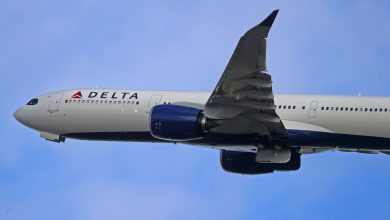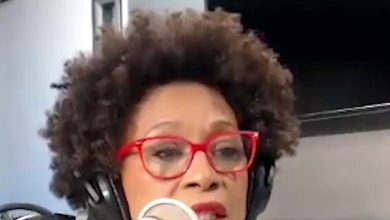NCAA settles antitrust lawsuit over athlete compensation


Thousands of former college athletes will be eligible for payments ranging from a few dollars to more than $1 million under the $2.78 billion antitrust settlement between the NCAA and five powerhouse conferences, a deal that also paves the way for schools to directly compensate athletes while trying to regulate booster payments.
Details of the sweeping plan were filed Friday in federal court in the Northern District of California, just over two months after the framework of a settlement was announced.
The deal still needs to be approved by a judge.
“College athletes will finally be able to share in the billions of dollars that their compelling stories and dynamic performances have generated for their schools, conferences and the NCAA,” the filing states. “This is nothing short of a sea change for college sports after more than four years of hard-earned victories in this case.”
The comprehensive roadmap includes guidelines on individual sports roster caps that will replace scholarship limits; how new financial payments will be monitored and enforced to ensure school compliance; how third-party payments to athletes will be regulated; and how nearly $3 billion in damages will be distributed by plaintiffs over the next 10 years.
These payments vary widely and are determined by the sport played, the time, duration and conference in which an athlete participated.
Although Division I athletes in all sports are eligible to collect damages, the majority of damages should go to football and basketball players from power conferences, because those leagues and teams generate most of the revenue from multibillion-dollar media rights contracts.
The agreement covers three antitrust cases — including the class action known as House v. NCAA — that challenged the NCAA’s compensation rules dating back to 2016.
The plaintiffs claimed that NCAA rules prevented thousands of athletes from earning millions of dollars through the use of their names, images and likenesses.
The NCAA lifted its ban on athletes earning money from their fame through endorsement and sponsorship deals in 2021.
The agreement does not address the issue of whether college athletes should be considered employees, but it includes a clause that suggests the agreement could be amended if “a change in law or circumstances permits collective bargaining.”
The NCAA and college sports leaders continue to seek help from Congress in the form of federal legislation that would supersede state laws and allow the association and conferences to govern themselves without fear of future antitrust litigation.
“This agreement is an important step forward for student-athletes and college athletics, but it does not solve all the problems,” the commissioners of the Atlantic Coast Conference, Big Ten, Big 12, Pac-12, Southeastern Conference and NCAA President Charlie Baker said in a joint statement. “The need for federal legislation to address these issues remains. If Congress fails to act, the progress made through the agreement could be significantly eroded by state laws and continued litigation.”
While that relief seems unlikely to come soon — especially with the presidential election just months away — college sports leaders hope the deal can provide some certainty for schools and finally stem the ongoing legal attacks on its archaic model of amateurism.
Paying athletes
The NCAA and conferences have agreed to change their rules to allow a historic compensation system that allows schools to share up to about $21 million in athletic revenue with their athletes each year, starting in 2025.
That figure is derived by taking 22 percent of the average revenue generated from media rights contracts, tickets and other sources by schools in power conferences.
The agreement will create an audit system that will allow plaintiffs to monitor sports revenues, which are expected to increase in the coming years as new media rights deals take effect for conferences and the College Football Playoff.
Athletes are expected to receive between $1.5 billion and $2 billion a year.
All athletes will be eligible to receive the new financial benefits, but each school will be allowed to determine how it wants to distribute the money among sports.
Exactly how Title IX’s gender equality rules apply is still unclear and will require clarification at the federal level. How schools comply with Title IX will be up to each institution.
Scholarships and candidate lists
Replacing scholarship caps with roster caps could mean even more athletic scholarship opportunities in Division I.
Most notably, major college football teams will now be allowed to have 105 scholarship players instead of the current 85, although schools will no longer be required to give full scholarships to every football player.
Partial scholarships have been used in some sports for years, but will now be allowed in all sports.
The roster caps for baseball (34), softball (25) and volleyball (18) will also allow for a significant increase in the number of scholarships schools can offer in those sports, although schools will not be required to adhere to the cap.
NIL agreements and monitoring
NCAA rules were recently changed to allow schools to be more involved in providing NIL opportunities to college athletes, but they will still be allowed to enter into agreements with third parties.
A new voluntary reporting system for transactions over $600 is expected to launch next month.
The NCAA is creating a public database that it hopes will allow athletes to assess fair market value.
Booster-funded NIL collectives have become a common way to compensate athletes, but now those deals will be subject to review through an arbitration process to determine whether they are intended for a “valid commercial purpose,” according to the agreement.
Violations could result in eligibility penalties for athletes and sanctions for schools.
Compensation for damages
The plaintiffs in the House case are responsible for distributing the damages. The filing Friday included a chart detailing the categories of eligible athletes and four different types of payments they could claim.
According to the plaintiffs, approximately 19,000 Power Conference football and men’s basketball players will be eligible to receive an average of $91,000, with payments ranging from $15,000 to $280,000 just for what’s called name, image and likeness use.
Some of these same athletes could also be eligible for tens of thousands of dollars more because of lost opportunities to earn zero dollars while in college and what the plaintiffs call “pay-for-play.” Plaintiffs’ attorneys say a few athletes will be eligible to receive more than $1 million.
Next steps
Plaintiffs’ attorneys say they will file a motion for preliminary approval and – if granted – a public website will go live in about two months where former college athletes can determine how much they are eligible to receive.
However, it will take several months before the agreement is finally approved.
Athletes who are members of the plaintiffs’ class will have the opportunity to challenge the settlement and ask to be excluded. One school, Houston Christian, has already objected, but the judge denied its request to intervene.
New York Post





